Australia’s self-identity remains persistently centred on being White and Western, with, as Ghassan Hage has put it, a consequent governmental sense of belonging over its territory,[1] but this has always been a matter of wishful thinking on the part of the nation’s dominant culture rather than reality.
Arrival and Distribution
The influx of refugees from the Vietnamese/American War from the mid 1970s not only created new Australian communities of Vietnamese, Cambodian, Lao and other origins, but also led to a range of changes to the built environments of Australia’s suburbs. Retail precincts near their areas of residential settlement provide the most visible examples of these changes, but industrial areas have also been altered. The factories, processing plants, workshops and warehouses, constructed or adapted to house industries developed for and by these new communities have become numerous, important but under-recognised elements of the contemporary Australian landscape. The industrial areas of Melbourne’s suburb of Springvale, near the former location of Enterprise Migrant Hostel, provide examples of this landscape.
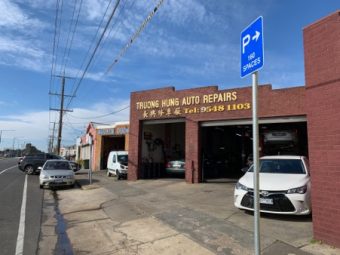
Industrious Settlement
Through their entrepreneurial abilities, and the need for products and services that were previously unavailable or unknown in Australia, many new communities have succeeded in transforming local manufacturing, commercial and retail landscapes. Retail/commercial places denote particular social/cultural identities, and their spatial occupation is important. First, they demarcate territory within a broader Australian/Western conception of land ownership (notwithstanding the unceded indigenous territorial sovereignty of that same land). Second, commercial and industrial precincts are places of economic and cultural production, not just for specific communities, but for Australia overall.
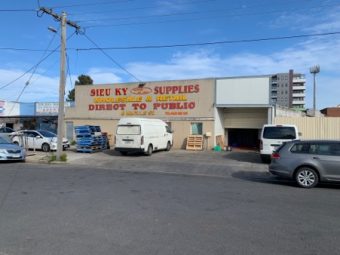
Different Different but Same
The actual architecture of industrial areas isn’t particularly expressive or variable, no matter who is occupying it, but signs of who is inhabiting local spaces signifies bodily differences that do matter. Every culture has its own genealogies of practice – identified by particular products and practices that as types are not so dissimilar to those of others (shops, stalls, manufacturing enterprises, etc.) but are given their identity first by specific histories and memories and translations and second by their adaptation to found conditions. The businesses set up by new Australian communities of whatever origin might involve new industries, such as the manufacture or importation of specific food products but they also provide developments to existing ones, such as legal and accounting services or auto repairs and tyre fitters that communicate in particular languages.
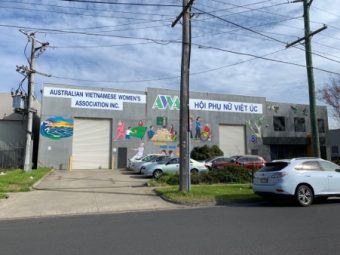
Messy suburbs
This arrival and adaptation to new territories (sometimes adapting buildings that are pre-existing, sometimes constructing anew in pre-existing spaces and zones) is important here as it geographically marks out identity. In this way territories of difference are created, particular locations that not only become identified as different from what surrounds them, but also are different from the places of emigration and previous settlement. This difference is not singular but multiple, diasporic, transnational, cosmopolitan. This difference is not designed for aesthetic pleasure. It is pragmatic, ordinary, even messy.
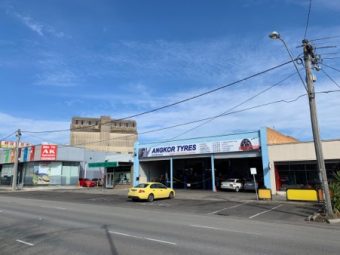
Affordance and Belonging
Mess is usually assumed to be negative but when Jeffrey Hou and Manish Chalana talk about messy urbanism they are being positive, seeing apparent mess as both a provocation of and resistance to the persistent, institutional, and cultural biases that continue to exist in societies.[2] As evidence of this, it is around the seemingly ordinary environments of warehouses and small factories that communal, cultural and religious places can often be found. It may be, of course that this locating is a function of the low esteem in which commercial/industrial landscapes are held by existing populations and consequently the lack of planning and heritage controls. However, the overall effect is that new industries generate the economic advancement of new communities, affording people the means and the space to adapt or construct other buildings they need and investing new territories with a sense of belonging.
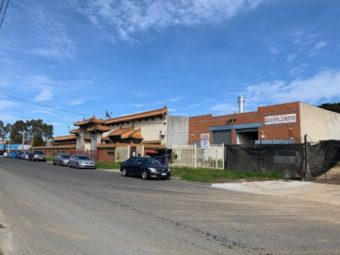
[1] Ghassan Hage (1998). White Nation: Fantasies of White Supremacy in a multicultural society. Annandale NSW, Pluto Press.
[2] Jeffrey Hou and Manish Chalana (2016) ‘Untangling the “Messy” Asian City’, in Chalana M. and Hou, J. [Eds.] Messy Urbanism: Understanding the “Other” Cities of Asia, Hong Kong, HKU Press.
This research is part of an Australian Research Council funded project ‘Architecture and Industry: The migrant contribution to nation-building’.


1 thought on “Territories of Difference”